Table of Contents
- 2. Underwater Welder Life Expectancy: Navigating a Challenging Career
- 3. Studies on life expectancy for underwater welder
- 4. Comparative Analysis with Topside Industries
- 5. Risks Associated with Underwater Welding
- 6. Underwater Welding Death Rate
- 7. Assessment of Worth: Balancing Risks and Benefits
- 8. Safety Measures and Precautions
- 9. Impact on Life Expectancy Underwater Welder: Mortality Rate and Causes
- 10. Prolonging Underwater Welders’ Lifespan
- Underwater welder salary life expectancy
- Conclusion: Navigating the Depths with Resilience
- FAQs about Underwater Welder Life Expectancy
- What is the average life expectancy of an underwater welder?
- How do underwater welders manage the risks associated with their profession?
- Can technology help improve the life expectancy of underwater welders?
- What are the key health challenges faced by underwater welders?
- How can aspiring underwater welders prepare for a long and successful career?
- What measures can be taken to enhance the safety of underwater welders?
Unveiling the mysteries of underwater welder life expectancy, Welding underwater is a job that requires skill, is dangerous, and is attractive. The mystery of it all draws people to it, but below the surface is a harsh truth: it’s a job that comes with both the promise of excitement and the weight of risk. People are very interested in and worried about how long an underwater welder can work.
It raises questions about how dangerous their job is and how long they can stay alive. We delve into studies, risks, comparative analyses, and safety measures to shed light on the mysterious topic of underwater welders’ life expectancy. This job defies both the limits of depth and the limits of safety.
The life expectancy of an underwater welder is a topic that juxtaposes the thrill of a unique profession with the sobering realities of mortality. Several factors contribute to the nuanced understanding of how long an underwater welder can expect to live while engaging in this demanding occupation.
- Physical Demands: Underwater welding demands exceptional physical fitness and mental resilience. The combination of welding skills and diving expertise necessitates a robust physique capable of withstanding prolonged periods of exertion in high-pressure underwater environments. The physical toll from exposure to extreme conditions, including water pressure, temperature variations, and the demanding nature of welding tasks, can influence an individual’s overall health and longevity.
- Exposure to Hazards: The job involves exposure to various risks, from the dangers associated with welding itself to the perils of working in underwater conditions. Risks such as decompression sickness, hypothermia, drowning, electrocution, and encounters with environmental hazards significantly impact the well-being and longevity of underwater welders.
- Work Environment: The challenging work environment of underwater welding adds a layer of complexity to the job’s impact on life expectancy. Limited visibility, confined spaces, and the need to perform intricate welding tasks in harsh conditions contribute to the overall stressors faced by professionals in this field.
- Stress and Mental Well-Being: Beyond physical demands, the mental and emotional stress of consistently working in high-risk scenarios can affect an individual’s health over time. The inherent dangers and the need for constant vigilance may have long-term implications for mental well-being, potentially impacting life expectancy.
Understanding these multifaceted aspects is crucial to grasping the intricacies of an underwater welder’s life expectancy. By dissecting the physical demands, exposure to hazards, work environment, and mental toll, a clearer picture emerges of the challenges and considerations that shape the longevity of those dedicated to this daring profession.
3. Studies on life expectancy for underwater welder
Several studies have attempted to shed light on underwater welders’ life expectancy and mortality rates. These studies, spanning different periods and methodologies, provide valuable insights into the risks and potential impacts on the lifespan of individuals engaged in this profession.
- DTIC Study: 1943 A pioneering study conducted in 1943 by the Defense Technical Information Center (DTIC) aimed to assess underwater welders’ mortality rates and life expectancy. This early study laid the groundwork for understanding occupational hazards and their implications for life expectancy.
- CDC Study: 1989 – 1997 A more contemporary study conducted by the Centers for Disease Control and Prevention (CDC) during the period of 1989 to 1997 focused on analyzing the mortality patterns and causes among underwater welders. This study provided updated insights into the factors influencing life expectancy within the profession.
- NCBI Study: 1968 – 1978 Another pivotal study conducted by the National Center for Biotechnology Information (NCBI) between 1968 and 1978 explored the correlation between the duration of an underwater welder’s career and their life expectancy. This longitudinal study aimed to uncover potential trends in longevity based on the duration of exposure to occupational hazards.
- TDA Study: 2002 – 2014 In a more recent analysis spanning from 2002 to 2014, the Technical Diving Association (TDA) focused on assessing the specific risks and mortality rates associated with modern underwater welding practices. This study aimed to identify any evolving trends in the profession’s impact on life expectancy.
Each study contributed significantly to our understanding of the life expectancy of underwater welders by examining different facets of the profession. These studies varied in scope, duration, and methodologies, yet collectively provided a comprehensive view of the risks, trends, and potential impacts on the longevity of individuals engaged in underwater welding.
4. Comparative Analysis with Topside Industries
Understanding underwater welders’ risks and mortality rates becomes more comprehensive when juxtaposed against comparable industries operating in topside environments such as construction and manufacturing. Analyzing these sectors provides a comparative perspective on the risks underwater welders face and their counterparts working in different conditions.
Topside Construction Examining the mortality rates and occupational hazards within topside construction helps draw parallels and distinctions between the dangers faced by construction workers on land versus those encountered by underwater welders. Factors such as falls, machinery accidents, and exposure to hazardous materials constitute the risks in this industry.
Topside Manufacturing Similarly, the manufacturing industry presents its occupational risks, including chemical exposure, machinery accidents, and ergonomic challenges. Contrasting these risks with the hazards underwater welders face offers insights into the unique perils of working underwater.
By comparing the mortality rates and prevalent risks in topside industries with the hazards encountered by underwater welders, a clearer understanding of the distinct challenges and risks specific to underwater welding emerges. This comparative analysis aids in contextualizing the dangers faced by underwater welders and contributes to a more nuanced evaluation of their occupational risks and life expectancy.
5. Risks Associated with Underwater Welding
Underwater welding is a profession steeped in risk, requiring individuals to navigate a myriad of hazards inherent in both welding and underwater operations. The occupational risks underwater welders face significantly impact their safety and, consequently, their life expectancy.
- Decompression Sickness (The Bends): One of the most notorious risks in underwater welding is decompression sickness, often called the bends. This condition occurs when nitrogen bubbles form in the bloodstream due to rapid decompression after ascending from deep waters, leading to severe and potentially fatal symptoms if not promptly treated.
- Hypothermia: Working in cold underwater environments poses the risk of hypothermia, where prolonged exposure to low temperatures can lead to a dangerous drop in body temperature, compromising bodily functions and posing severe health risks.
- Drowning Incidents: Despite being skilled divers, underwater welders face the constant threat of drowning. Accidents, equipment failures, or unexpected situations can lead to tragic outcomes, highlighting the perpetual risk of working in submerged environments.
- Electrocution: The combination of water and electrical equipment presents a significant hazard. Any oversight or malfunction in the electrical systems used during welding tasks can result in electrocution, leading to severe injuries or fatalities.
- Environmental Hazards: Underwater environments expose welders to a range of environmental hazards, including unpredictable currents, limited visibility, and encounters with marine life, presenting potential dangers and adding to the complexities of their work.
- Differential Pressure (Delta P Deaths): Delta P deaths, caused by pressure differentials between enclosed spaces, pose a unique and lethal risk for underwater welders. These incidents occur when trapped water causes a sudden and powerful suction force, leading to severe injuries or fatalities.
Understanding and mitigating these risks is crucial to safeguarding the well-being and longevity of underwater welders. Implementing rigorous safety protocols, proper training, and utilizing advanced equipment are essential steps in minimizing these inherent dangers and preserving the lives of those engaged in this demanding profession.
6. Underwater Welding Death Rate
Examining the mortality rates within the field of underwater welding provides a critical perspective on the occupational risks and the actual impact on the profession’s practitioners. Analyzing these rates helps comprehend the extent of risk and the gravity of the potential consequences associated with underwater welding.
- Fatalities Analysis: A statistical analysis of fatalities related to underwater welding offers insights into the prevalence and types of incidents leading to deaths. Understanding the specific scenarios and causes contributing to fatalities is crucial in devising preventive measures.
- Risk Assessment: Assessing the risks inherent in underwater welding allows for a comparative analysis with other occupations and industries. Determining the relative risk factors helps quantify the dangers and establish appropriate safety measures.
- Understanding the Risk Levels: Understanding the risk levels associated with different aspects of underwater welding—such as diving-related hazards, welding-specific risks, and environmental factors—provides a comprehensive view of the dangers practitioners face.
- Trends and Changes: Observing trends and changes in underwater welding-related fatalities over time helps identify improvements or deteriorations in safety practices and technological advancements. This analysis aids in shaping future safety protocols and guidelines.
A holistic evaluation of the dangers inherent in underwater welding emerges by delving into mortality rates, assessing risks, understanding risk levels, and tracking trends. This information serves as a crucial foundation for devising and implementing measures to enhance safety and mitigate the occupational risks underwater welders face.
7. Assessment of Worth: Balancing Risks and Benefits
Assessing the value and worth of pursuing a career in underwater welding requires careful consideration of the associated risks against the potential benefits and rewards of the profession. Evaluating whether the risks outweigh the advantages or vice versa is crucial for individuals contemplating entering this field and for the industry at large.
- Risk vs. Reward Analysis: Comparing the risks involved in underwater welding against the potential rewards, including financial compensation and career opportunities, provides a basis for understanding the balance between risk and benefit.
- Career Prospects and Remuneration: Exploring the career prospects and financial compensations available in underwater welding provides insights into the tangible benefits that attract individuals to this challenging profession.
- Personal Fulfillment vs Occupational Hazards: Weighing the potential personal fulfilment derived from pursuing a career in underwater welding against the known occupational hazards helps individuals make informed decisions regarding their career choices.
- Industry Safety Measures: Understanding the measures taken by the industry to mitigate risks and enhance safety further informs the assessment of whether the profession is evolving to minimize its inherent dangers.
- Long-term Implications: Considering the long-term implications on health and overall well-being when engaging in underwater welding aids individuals in making comprehensive assessments of their career choices.
By thoroughly evaluating the risks and benefits associated with underwater welding, individuals can make informed decisions regarding career paths, while the industry can implement measures to ensure a balance that prioritizes safety without compromising the potential gains of this unique profession.
8. Safety Measures and Precautions
Implementing robust safety measures and adhering to stringent precautions are fundamental aspects in mitigating the inherent risks associated with underwater welding. Ensuring the safety and well-being of professionals engaged in this demanding occupation requires comprehensive protocols and ongoing vigilance.
Specialized Training and Certification: Underwater welders undergo specialized training and certification programs that equip them with the necessary skills and knowledge to operate safely in underwater environments. These programs cover diving techniques, welding procedures, emergency protocols, and hazard awareness.
Adherence to Safety Protocols: Strict adherence to established safety protocols and guidelines is imperative. This includes pre-dive checklists, proper equipment inspection and maintenance, and adherence to established procedures during welding tasks and diving operations.
Advanced Equipment and Technology: The utilization of advanced equipment and cutting-edge technology designed specifically for underwater welding enhances safety. Tools such as dry hyperbaric welding systems, advanced diving suits, and specialized welding gear contribute to minimizing risks.
Continuous Risk Assessment: Regular and systematic assessment of risks associated with underwater welding operations ensures that safety measures remain practical and relevant. This constant evaluation allows for adjustments and improvements in safety protocols.
Emergency Response Preparedness: Preparation for emergency scenarios, including swift and effective response procedures for decompression sickness, accidents, or equipment failures, is essential. Adequate training in emergency response protocols is crucial for mitigating risks.
Health Monitoring and Support: Implementing health monitoring programs to track the well-being of underwater welders and providing access to physical and mental health support services helps address emerging concerns and ensure overall well-being.
By integrating these safety measures and precautions into the practices of underwater welding, the industry endeavours to minimize risks and create a safer working environment for professionals, ultimately contributing to the preservation of life and well-being within this challenging field.
9. Impact on Life Expectancy Underwater Welder: Mortality Rate and Causes
Understanding the correlation between occupational hazards in underwater welding and their impact on life expectancy necessitates a comprehensive exploration of the causes that affect mortality rates within this profession.
- Electrocution: Electrocution incidents, often arising from equipment malfunction or improper handling, stand as a significant cause of fatalities among underwater welders. Addressing electrical safety protocols and equipment maintenance is pivotal in reducing this risk.
- Hypothermia: Exposure to cold underwater environments can lead to hypothermia, resulting in severe health complications and even fatalities. Proper insulation, adequate gear, and adherence to safety protocols mitigate the risk of hypothermia.
- Drowning: Despite their expertise in diving, underwater welders face the constant risk of drowning. Accidents, equipment failures, or unforeseen circumstances can lead to fatal outcomes, emphasizing the perpetual risk of working in submerged conditions.
- Explosions: Explosions during welding operations pose a grave danger. Addressing the risks associated with combustible materials, ensuring proper ventilation, and employing safe welding practices help mitigate this risk.
- Decompression Sickness (DCS): The bends, or decompression sickness, arise from rapid ascent after prolonged underwater exposure. Strict adherence to dive tables, proper decompression protocols, and continuous monitoring minimize the risk of DCS.
- Other Factors: Additional factors impacting mortality rates in underwater welding include the presence of carbon monoxide, inadequate ventilation, pressure differentials leading to delta P incidents, and other risks specific to working in aquatic environments.
Understanding the causes and risks contributing to mortality rates is critical to devising targeted preventive measures. By addressing these specific hazards through stringent safety protocols, enhanced training, and technological advancements, the industry can strive to reduce mortality rates and consequently positively impact the life expectancy of underwater welders.
10. Prolonging Underwater Welders’ Lifespan
Enhancing safety measures and implementing practices to extend the lifespan of underwater welders involves a multifaceted approach that addresses specific risks while promoting overall well-being and longevity within this demanding profession.
Identifying Risks that Shorten Lifespan: Recognizing and understanding the risks that significantly impact the lifespan of underwater welders is fundamental. Identification allows for targeted measures to mitigate these risks.
Special Equipment and Safety Measures: Utilizing specialized equipment and implementing stringent safety measures, including robust dive and welding gear, reinforces safety and reduces the risks associated with underwater welding tasks.
Risk Management Training: Thorough and continual training on risk management, emergency response, and hazard awareness equips underwater welders with the necessary skills to navigate potentially dangerous situations.
Health Monitoring Programs: Establishing health monitoring programs that track physical and mental well-being enables early detection of any issues and ensures timely intervention or support.
Preventive Healthcare Measures: Promoting preventive healthcare measures, including regular health check-ups, proper nutrition, fitness regimes, and stress management, contributes to overall well-being and helps prolong lifespans.
Research and Technological Advancements: Investing in research and embracing technological advancements to enhance safety equipment and protocols leads to continual improvements in minimizing risks.
Promoting Work-Life Balance: Promoting a healthy work-life balance by managing workloads, giving enough breaks, and creating a helpful work environment can help keep you healthy and reduce stress.
The underwater welding business tries to make underwater welders last longer by putting health and well-being first and looking for ways to find, reduce, and manage risks. This proactive approach aims to create a safer and more sustainable work environment for those dedicated to this challenging yet essential profession.
Underwater welder salary life expectancy
Underwater welders can earn between $25,000 to $150,000 per year. However, the job can be risky. There isn’t specific data on life expectancy, but following safety rules and using proper equipment for a long, safe career is crucial.
video by TalkWidTech
In the world of underwater welding, life expectancy is influenced by a delicate balance of experience, safety measures, and technological advancements. The challenges are formidable, but so are the rewards for those who choose this unique and adventurous profession. By prioritizing health, safety, and skill development, underwater welders can look forward to a career that not only endures but thrives in the depths beneath the waves.
FAQs about Underwater Welder Life Expectancy
Here are some frequently asked questions about the life expectancy of underwater welders:
What is the average life expectancy of an underwater welder?
The life expectancy of an underwater welder can vary significantly based on factors such as experience, adherence to safety protocols, and overall health. On average, it may range from 10 to 25 years.
How do underwater welders manage the risks associated with their profession?
Underwater welders manage risks by undergoing rigorous training, adhering to safety guidelines, and utilizing advanced equipment. Experience also plays a crucial role in identifying and mitigating potential hazards.
Can technology help improve the life expectancy of underwater welders?
Yes, technology has led to the development of safer equipment and techniques. Remote-operated vehicles (ROVs) and improved welding methods allow underwater welders to perform tasks with reduced exposure to risks.
What are the key health challenges faced by underwater welders?
Underwater welders often face health challenges such as decompression sickness, exposure to extreme pressures, and the physical strain of working in challenging conditions. Proper health maintenance and regular check-ups are essential.
How can aspiring underwater welders prepare for a long and successful career?
Aspiring underwater welders should focus on obtaining proper training and certifications. Developing physical fitness, mental resilience, and a commitment to safety protocols will contribute to a successful and sustainable career.
What measures can be taken to enhance the safety of underwater welders?
Enhancing safety involves rigorous training, continuous skill development, adherence to safety protocols, regular equipment maintenance, and conducting thorough risk assessments before each dive.
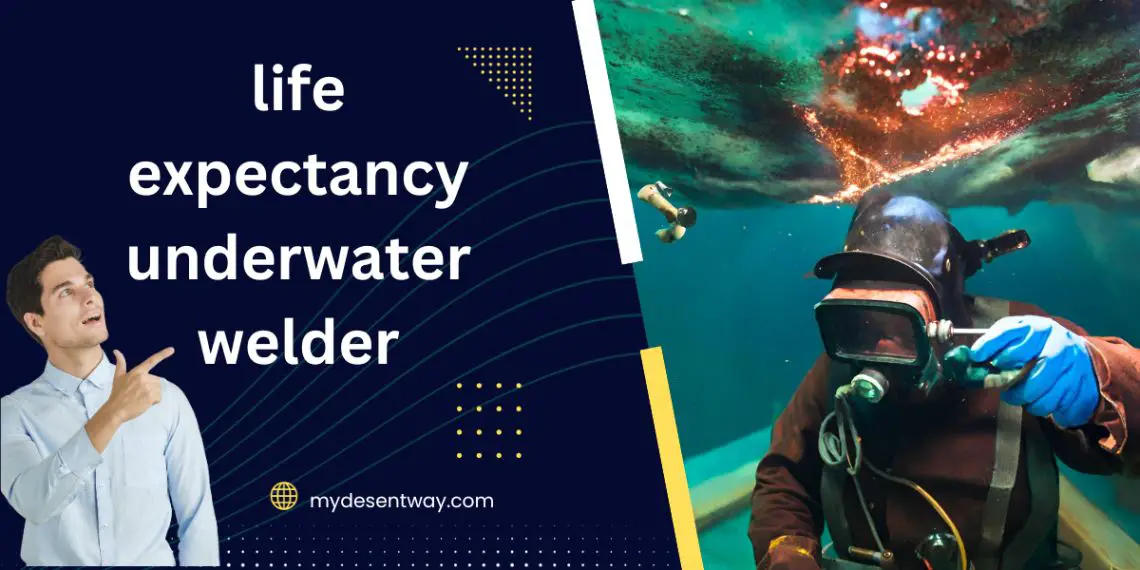
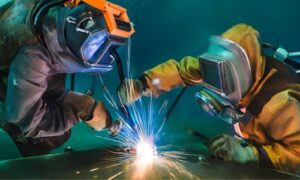
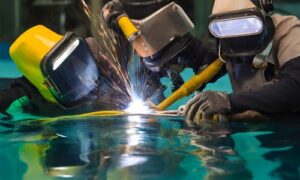
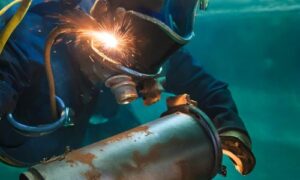
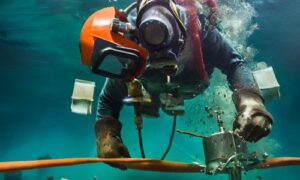
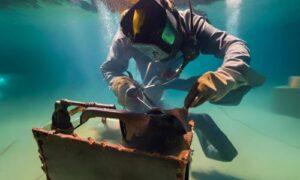
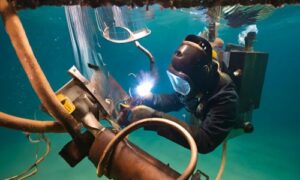
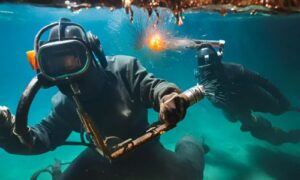

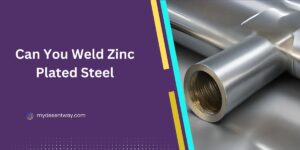






4 thoughts on “Unlocking Underwater Welder Life Expectancy”